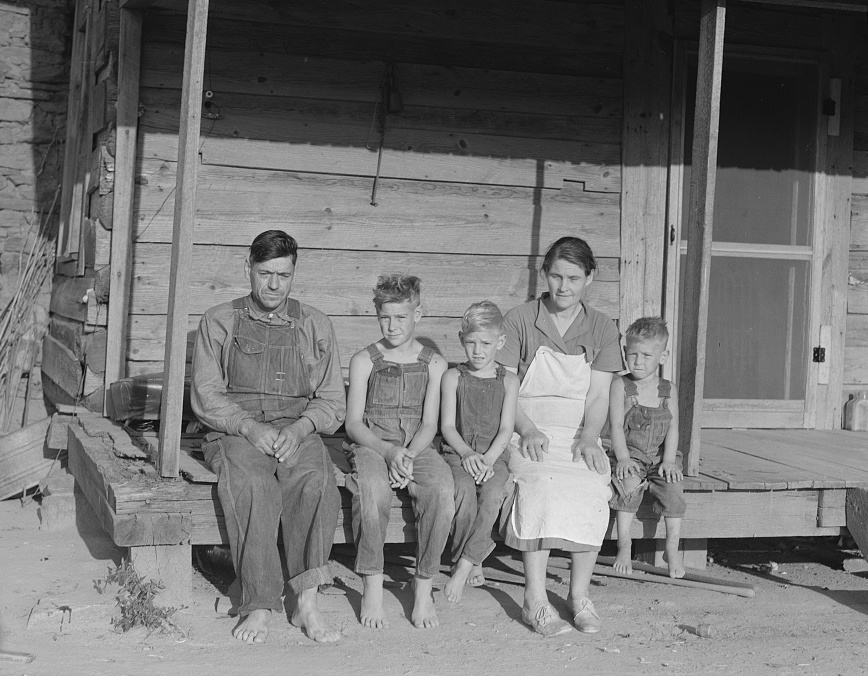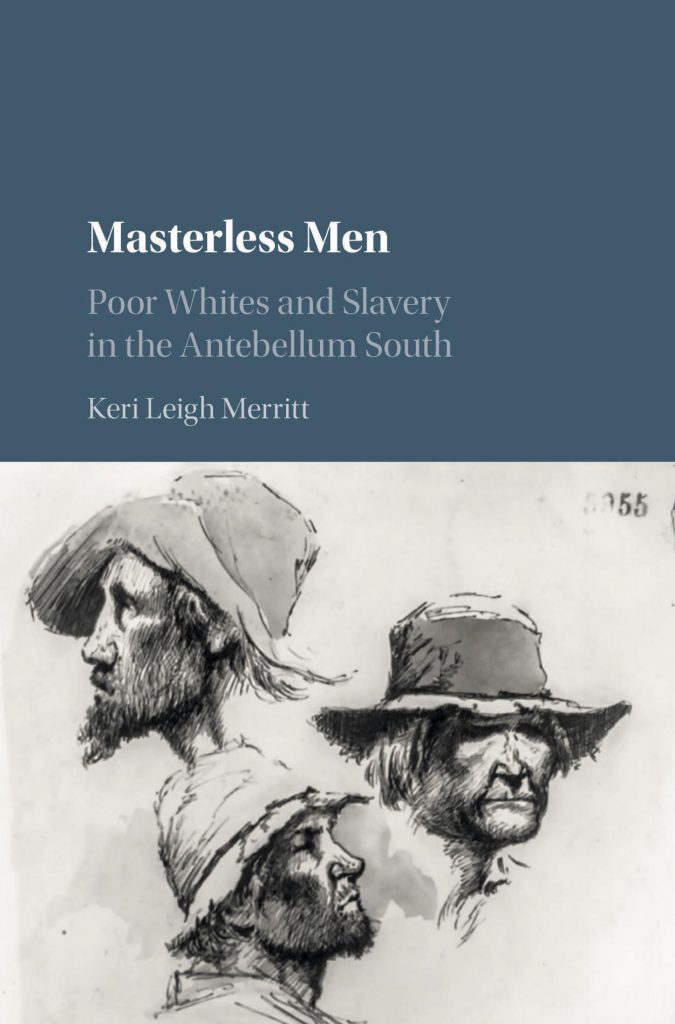Antebellum Law and the Southern Justice System
*This post is part of our roundtable on Keri Leigh Merritt’s Masterless Men.

I must confess from the outset that I never had much sympathy for southern “poor whites,” nor did I harbor even an ounce of tenderness for Andrew Johnson. But Keri Leigh Merritt’s Masterless Men:Poor Whites and Slavery in the Antebellum South (2017) has changed that. In Merritt’s telling poor whites’ hatred for slavery and enslavers rivaled abolitionists, making them, in the words of Garth Brooks, my new “friends in low places.” Even Johnson who was a loathsome president later in life has earned some respect from me as a youthful foe of the slave power. Thanks to the work of historians like Manisha Sinha, Leonard Richards, Ed Baptist, William Dusinberre, and Paul Finkelman, we have a deep understanding of the anti-democratic, oligarchic, oppressive quality of the planter class and their designs for race and class-based authoritarian rule. But Merritt takes us in a different direction, revealing in detail how that authoritarian rule daily degraded poor whites and yielded a profoundly sick civilization at all levels.
In short, the planter class was even more villainous and despicable than we had imagined. Their psychological and physical brutality against the enslaved has been well-cataloged, but their viciousness towards poor whites is just now being understood. Not only did planters keep non-enslavers in crushing poverty and near-starvation (Merritt’s description of “dirt-eating” is eye-opening) through fraudulent promissory notes, depressed wages, discriminatory licensing laws, and denial of education, but they also indulged in sexual violence and child labor, destroying lives even before adulthood. The bodies of poor whites, Merritt demonstrates convincingly, were of even less value to enslavers than Black slaves (who theoretically held monetary value), thus they did not hesitate to exploit, mutilate, and destroy them at will. So much for the racial solidarity that generations of scholars have asserted.
It is hard not to sympathize with, or even downright cheer for, poor whites who lashed out at their oppression. As an avowed foe of all forms of unfree labor, then and now (I am, proudly, a member of Historians Against Slavery), I relish Merritt’s many examples of resistance to the slave-based oligarchy. When one impoverished white killed his former employer, who had cheated him out of hard-earned wages and then faced the death penalty, he lamented, “it is hard to be killed for one damned dog. If I could kill one more I would die willing” (89). Upon reading that I thought “huzzah for him.”
I am also pleased to find that Merritt shows no mercy in her assessment of enslavers as cold-hearted capitalists. There is no syrupy, redemptive paternalism in Masterless Men. Rather Merritt uses the utterances and writings of the enslaver grandees to tear down their propaganda, revealing them to be greedy, soulless, and ruthless businessmen. Complaining about not being able to legally beat, torture, and maim poor whites as he could Blacks, for example, one planter moaned, “you can’t squeeze as much out of the poor white as you can out of the darkey” (96). Indeed enslavers wanted to “squeeze” as much profit from human suffering, white and Black, as they could.
But Merritt argues there was more at stake for the planter class than just plain profits. Enslavers also wanted poor whites working to keep them out of trouble. Planters worried that idleness could lead to all kinds of mischief, including relationships with slaves (sexual, conspiratorial, or financial), black market dealings, and political mobilization. Few notions struck terror in the hearts of the ruling class more than the fear that poor whites and enslaved Blacks would find common cause and overthrow the regime. To prevent interracial cooperation and get poor whites off the streets, planter politicians developed and enforced a variety of anti-vagrancy laws. Most commonly associated with the post-Reconstruction “Jim Crow” era, Merritt explains that vagrancy laws actually originated decades earlier and were aimed primarily at “free,” poor whites. Nevertheless enforcement was the same: “slave owners could use vagrancy laws to lock away anyone who posed a threat to the southern system, even if no crime had been committed” (185).
The most remarkable contribution of Masterless Men is Merritt’s discussion of antebellum law and the southern justice system. Building on the work of Sally Hadden, Merritt convincingly demonstrates that much of the framework for what we associate with Jim Crow-era oppression of Blacks (vagrancy laws, fee system, police brutality, convict labor, etc.) was constructed before the Civil War and aimed at poor whites. “Slaveholders had created such an amazingly effective system of social control—replete with private, legal, and extralegal surveillance and violence—that the underclasses truly risked their lives if they attempted to challenge the master class’s power in any small way” (253). In order to understand Jim Crow oppression, essentially, we must examine antebellum whites.
“The slave South was violent and brutal,” she writes, “but also intensely capitalistic, and in some ways—particularly its criminal justice system—strangely modern” (248). It is the “strangely modern” aspect of antebellum oppression that gives me chills. Perhaps jaded by the 2017 news cycle, I cannot but see connections between the tactics of the slave power and the United States’s current social and political crises, in particular the denial of public education as a weapon of a ruling regime. As I was reading how and why the master class kept the masses in ignorance, I was reminded of my own government’s war against education, especially in Texas where I live and teach. In the Lone Star State, policymakers aim to produce a pliable, ignorant workforce by slashing education budgets and devoting what little money is left to sports stadiums and athletic facilities.
Moreover, almost all the high school history teachers are athletic coaches, unqualified to teach or uninterested in actual scholarship. Many of my own students, most from rural areas, have trouble seeing the perils in such policies as they have never developed critical thinking skills. In addition Merritt’s section on poll taxes and property requirements for voting reminds me of the voter ID laws now being implemented across the United States. Taking her cue from Manisha Sinha, Merritt paints the Deep South states as anything but democratic. Fearing that popular political participation by poor whites would threaten the sacred “peculiar institution,” the ruling regime actively prevented voting and aimed to roll back the proverbial clock to medieval times. “They wanted a return to hereditary privilege, caste systems, and rule by the wealthy few” (172). Sounds eerily familiar. Merritt, seems to be aware of such connections, at times winking to her readers with well-placed words of warning. “Capitalism,” she concludes, “generally thrives when the masses are kept illiterate and uneducated” (151). Have Americans exchanged the rule of the slave power for the rule of corporations? Either way low-income Americans, both Black and white, suffer.
However, Merritt’s poor whites are not saints, and her book is in no way an excuse for their violence and racism. Rather, she demonstrates how an entire society and economic system emotionally debased and degraded them. Her sections on infanticide, wife-beating, and day-to-day viciousness are unnerving. She explains that poor whites were capable of inhuman brutalities that rivaled enslavers, but they were products of their environment. Planters were affected by their environment as well, but they had a choice in partaking in slavery, while poor whites had little or no choice in their lowly lot. That distinction matters to Merritt—choice matters.
Overall, Masterless Men challenges long-held assumptions about the antebellum American South, particularly the notion that slavery united whites above a Black laboring class. “Instead of unifying all whites,” she argues, “black slavery had opened deep fissures in any semblance of racial solidarity” (287). Moreover, Merritt undermines generations of scholarship on secession, revealing that the poor-white masses, rather than supporting secession out of racial unity, were forced into it through violence, coercion, and fraud.
I deeply appreciate Merritt’s courage in taking on these sacred bulls of Southern history, and I relish her unapologetic attacks on enslavers. She represents the best of a new generation of scholars willing to inject morality into their narratives and think differently about standard suppositions. I eagerly look forward to what she will do next.
Copyright © AAIHS. May not be reprinted without permission.

A compelling review of a very important book. Thank you both, Merrit and Landis
As a graduate of Texas public schools, I agree with your assessment of them here. Sadly. Particularly the part about history teachers as football coaches. I had terrific history teachers–but they were not the rule. Thank you, Michael.
A nice review here, Michael. Like yourself I have little to no sympathy for poor white southerners, particularly in light of their recent support for a number of revanchist policies. My copy of Merritt’s book will be coming in the mail soon.
Remember being required to take four years of Home Economics in Texas High School from 1954/1958.
Always wondered if white students were required to take Macro and Micro Economics across town.
Were they being prepared to become Titans of Commerce while l was being prepared to be their maid?